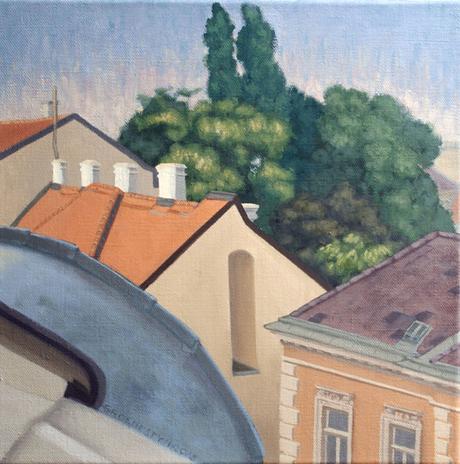
Ode to the rooftops (c) Samantha Groenestyn (oil on linen)
I
Pursuing a link between moods and art, Schmetkamp (2017: 1683) claims that ‘moods are the expressive equivalent of perspectives, of how we perceive and are in the world.’ Schmetkamp (2017: 1683; 1693) argues that films, in invoking particular moods, invite a shift in perspective. This is an initially attractive suggestion, because it seems to lead us away from the impulse to understand a work of art, a cognitive act, and to permit us to encounter the work of art in a pre-reflective way. In the case of painting, we might correspondingly argue that rather than confronting symbols in need of interpretation, we confront the perspective of another person–the painter–and are invited to try on that perspective, inhabit it, and perhaps adjust our own perspective accordingly.
But the idea of perspective-shifting is still chained to the impulse to understand another, as if the head of another is a ‘container of objects’ to which we somehow seek to gain access (Slaby 2014: 253; 255). Perspective-shifting is one way of describing empathy: as an ability to inhabit another’s perspective and thereby predict and share in their emotions (Goldie, 2011: 303; Slaby, 2014: 249). Slaby’s (2014: 252) compelling critique of empathy will thus help us grasp why perspective-shifting is equally unsatisfying in the realm of aesthetics, because of the parallel importance of agency. Beyond mere perspective-shifting, I propose that a painting, as an affective encounter between painter and viewer, offers a fertile, physical ‘we-space’ in which, rather than attempting to understand a painter, we may to some extent co-author our positions in the world: a shared and ongoing project (Krueger, 2011: 644).
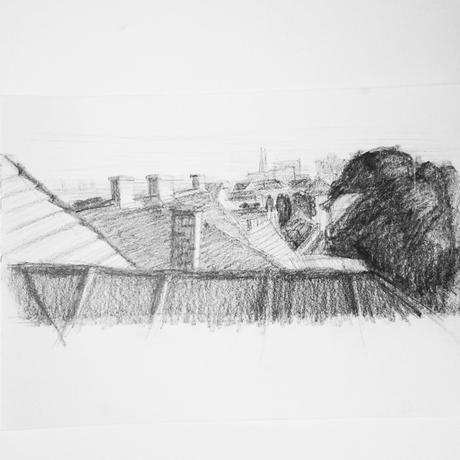
II Three broad categories: Perception, knowledge and agency
Empathy can be very broadly conceived in two ways. The first captures the directness with which we sometimes relate to others. Sometimes our emotional response to another person is automatic, involuntary and passive (Slaby, 2014: 255). Their emotions are not buried or locked away, but visible at the surface, directly available to perception (Slaby, 2014: 255; Zahavi, 2001: 153). Such direct responses are sometimes classed as ‘lower level’ empathy, for not being cognitively demanding (Slaby, 2014: 251). They encompass the kind of matching that goes on when a group spreads its contagious solemnity or rage or excitement, or the simulation explained by mirror neurons (Goldman, 2011: 33-36). Parallels with art may be traced in Tolstoy’s (1896) memorable but largely rejected contagion theory (Wollheim, 1980: 119), in which an artwork directly infects us with its emotional content. Any such superficial matching is problematic because it can be completely detached from the context of the original emotions–Coplan (2011: 7; 8) expresses this concern in terms of insufficient accuracy, and argues that empathy demands, in addition to some kind of matching, a more active and imaginative engagement with the emotions of others. Simply feeling along with someone without appreciating why they feel as they do seems too primitive a response to be considered empathy.
The second broad way is to prioritise the cognitive or reflective aspect of our encounter with others, and it treats emotions as a kind of knowledge to be obtained. This is where the urge to understand becomes particularly prominent. Another person’s emotions become pieces of information to be accessed and interpreted, they demand some active consideration, not unthinking mimicry, and once we have organised this information we are in a better position to say that we understand the other person as a whole. These responses are grouped as ‘higher level processes’, emphasising ‘the information-processing sense of that term’ (Coplan, 2011: 5; Goldman, 2006: 39; Goldie, 2011: 304). Goldman (2011: 36-38) calls it the ‘reconstructive route’ to empathy. The idea of a privileged first-person position, in which I have special access to my own emotions, fuels this attitude. While we might simply distinguish between our own experience of an emotion and another person’s experience of us having that emotion, emphasising a phenomenological difference, there is often rather the implication that we hold ‘an epistemically privileged position’ towards our own emotions–that we can know them more accurately than another (Slaby, 2014: 254). It becomes questionable here how far one can call such understanding of another person ‘empathy,’ since a psychopath could ably perform such intellectual puzzle-solving but would seem to lack a necessary element of feeling. Analogously, intellectually decoding a painting seems to miss the affective richness of a painting, which we would rather hope would move us.
Both of these broad categories, though they prioritise very different things, are united by a common underlying assumption. Whether perceptually accessed and mirrored, or reflectively computed and understood, emotions are on both accounts reified (Slaby, 2014: 257). From either position, emotions are treated as fixed objects, whether reproducible, observable, discoverable or knowable (Slaby, 2014: 253), whether by oneself or by another. It is this unsatisfying ‘common pattern’ of treating our experiences as bytes of information locked away in storage or transmitted as complete units that leads Slaby (2014: 253; 255) to defend a third broad conception of relatedness, one rooted in the phenomenological tradition, that shatters the very concept of empathy.
This third broad category, to which interaction theory belongs, moves away from these pre-packaged inner states and towards an active, embodied agency that is bound up with the world itself (Krueger, 2010: 644). It stresses the ongoing, future-oriented authorship of our perspectives. And, as beings wrapped up in the world, it emphasises the shared aspects of that agency (Slaby, 2014: 255). Abandoning the attitude that a painter embeds little packets of emotional information into a painting, which either directly arrest us or which we systematically interpret, we might instead approach the painting as a physical setting for the active construction of perspectives. The painter wrestles with her perspective in laying down paint; the viewer wrestles with his in mingling the two perspectives–not, as Schmetkamp (2017: 1683) claims, merely trying the painter’s perspective on. Agency changes the interaction between these perspectives, opening up a more sophisticated exchange than perspective-shifting. First we must consider what a perspective is.
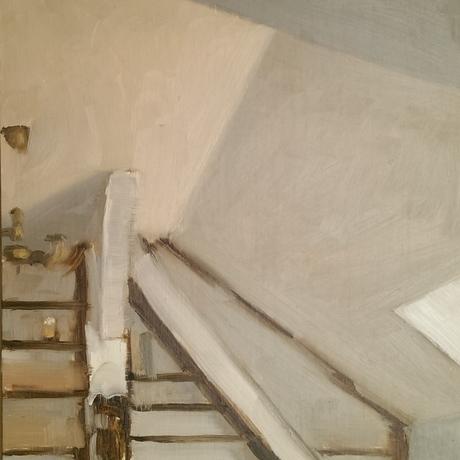
III Perspective
Drawing heavily on Merleau-Ponty, I frame perspective in terms of an ongoing project of positioning oneself in an ever-shifting world. Merleau-Ponty (2012 [1945]: 77-80) challenges the scientifically-driven assumption that the world is static and objectively knowable, that is, able to be described as if ‘from nowhere,’ stressing two crucial points. The world, in which we are inextricably immersed, can only be described in terms of relations. This is a familiar enough concept for a painter, who does not (usually) attempt to transcribe blue or yellow, as though these hues possessed fixed frequencies, but who rather sees that a mixture of gray next to a vivid yellow can appear blue: it is the relation between these hues that gives a certain effect. Likewise, the hills that shimmer a soft blue in the distance do so precisely because of the yawning gulf between us and them. The painted blue describes no objective feature of the hills, but rather the relation between us and the hills. (It is no accident that Leonardo da Vinci (2008: 113) adds this hue-shift to his list of types of perspective, calling it ‘perspective of color.’) A perspective must be made sense of in terms of our relations with other constituents of the world.
Secondly, and drawing on Husserl (1973 [1948]: 87), Merleau-Ponty (2012: 196) emphasises the indeterminacy of the the world. It ‘shimmers’ at its edges, open-ended, unresolved and brimming with unactualised possibility. Part of our being in the world involves acting on our possibilities, realising some and abandoning others, a process that reconfigures the world such that it offers a fresh spread of possibilities with every act. Our actions influence and alter how the world unfolds–we are participatory agents, and, what is more, we are directed towards an unfixed future. Our actions seize some possibilities and concretise our position in the world: I stand here in relation to the bluish haze of Kahlenberg; I stand here in relation to the restless rumblings of nationalism. And our perspective is never complete, we are continually authoring it as we move through the world.
Our perspective, then, may be considered quite literally as a view from where we stand in relation to others and the world, as a worldview, but importantly as an actively constructed and future-looking worldview that constantly incorporates new input even as it influences that world. Agency emerges as an integral part of perspective thus considered. Perspective proves to be not a passive apprehension of a predictable and rigid world, but a ‘practical point of view’ (Slaby, 2014: 252). In taking up our positions, we ‘enact a world’ (De Jaegher and Di Paolo, 2007: 488). As agents, argues Slaby (2014: 253), we are precisely not a hold for discrete entities and replicable states; rather, each of us has ‘a say in specifying, in ultimately deciding and committing to what one will have on one’s mind,’ and we partake in an ‘active, prospective engagement with the world: a future-directed positioning towards what goes on.’
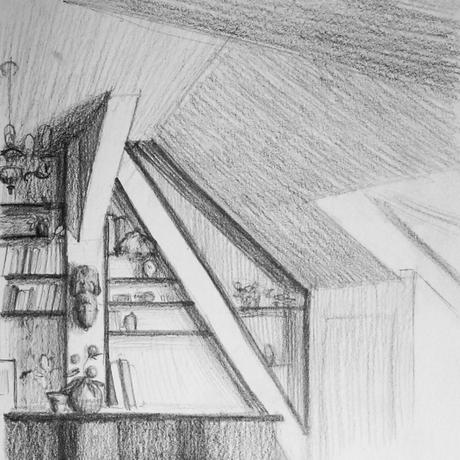
This positioning is far more than descriptive; it suffuses the world with significance. Heidegger (1993 [1927]: 185-187) argues for a practical significance, or ‘mattering,’ generated by our immersion in our projects and our seamless fusion with our tools; Sartre (1998 [1943]: 36-38) argues that acts as small as lighting cigarettes, or even failures to act, are the very things that affirm who we are and both indicate and bestow significance. The failure to quit one’s comfortable job and become a painter demonstrates that one wants a life of security and stability more than one wants to paint, however much one apparently regrets this inaction.
These embodied ways of conceiving of significance contrast starkly with the search for meaning and its linguistic overtones. Meaning or sense prompts us to make a propositional substitution, to uncover an objectified packet of knowledge which the thing directly encountered stands for. In replacing something with its ‘meaning,’ we claim we finally understand it and its import. This attitude puts us in a troubling position when relating to others: we presume we ‘have to work out each other’s minds much like [we] do with scientific problems’ (De Jaegher and Di Paolo, 2007: 486). De Jaegher and Di Paolo (2007: 486; 487) thus begin to flesh out an embodied, active and shared approach to introducing (rather than uncovering ready-made) significance into the world: ‘the enactive notion of sense-making.’
De Jaegher and Di Paolo’s (2007: 497) account of participatory sense-making gives another slant to perspective, emphasising that agents may cooperatively and expressively position themselves. This begins to look a lot like Slaby’s (2014: 255) alternative to empathy, a ‘co-presence’ that echoes Heidegger’s (1962 [1927]: 118) Mitwelt. Far from trying to get inside one another’s heads, or to bridge some unfathomable abyss, agents accept what they perceive at the surface–the cheerful smile of their cycling companion as they surge up Kahlenberg–and construct a shared perspective (Slaby, 2014: 255-6). Two happy parties navigate vineyards and Heuriger vitrines and jointly author a golden afternoon in the Viennese hills, an experience different from that which each would author alone, and without needing to imagine themselves inside the head of the other to forge an honest and valid connection. ‘We thus drop the assumption,’ declares Slaby (2014: 256) ‘that the goal of interpersonal relatedness would inevitably have to be an encompassing understanding of the other person.’

IV Painting
Painting could arguably occupy a special place in such embodied discussions of affective relatedness. A painter goes a step further when positioning herself in the world: she gives her perspective physical form. Painting is another kind of act; the painter not only takes up a position in the world, considering and selecting and rejecting certain possibilities as she applies paint, but she also openly lays out that position in that same act. The painting is like a smile. But instead of saying that a painting opens up the painter’s mind to us (as though it were some closed-off realm), we ought to say that a painting lets us see through the painter’s eyes. ‘The view from here,’ she declares, laying it out before us, actualising those fleeting moments in a carefully arranged and subtly related way, ‘looks like this.’
But how can we say, ‘The view from here looks like this’ when paintings invariably lie? The soul of painting seems to be precisely the way it deviates from our ordinary perceptual experience, whether very subtly, as in very naturalistic paintings, which nevertheless involve choices about contrast and atmosphere and how fine-grained the modelling should be, or whether quite dramatically, as when edges dissolve into one another, or crude chunks of color merely suggest masses, or when the world is fragmented into flat and interlocking geometric forms. Rather than saying abstractly that the painter gives her perspective physical form, we ought to investigate what this actually consists in.
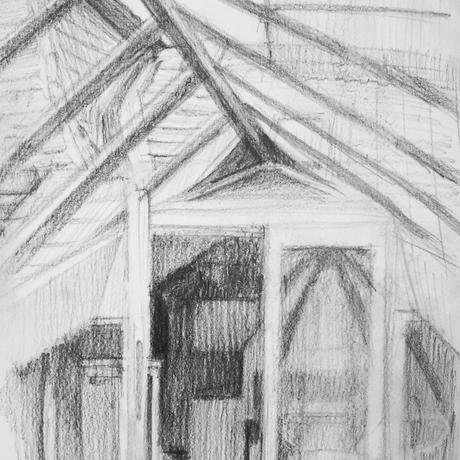
In the paintings of Ruprecht von Kaufmann, for example, people fly through the air, or grow fish heads, often have no head at all, or their toes melt together into a single sturdy foot mass. This is certainly not how the world literally looks; we are not dealing with mere perception. If we are to cast these paintings as von Kaufmann’s perspective, we need to admit other modes of intentionality into perspective. Imagination is very relevant here: von Kaufmann invents things that could not exist. But there is also a sense of anticipation, of imagining how things might unfold: a leaping person or a diving person on a certain trajectory, headed towards a partly visible and partly foggy future. Remembering is equally important. Von Kaufmann’s deeply emotional experiences with family, loss and doubt haunt the paintings.
Remembering even plays a much more pedestrian, technical role in his work (von Kaufmann, 2014). Von Kaufmann actively observes the world about him and commits things to memory before reprising them in his paintings. The construction of a chair, the bone structure of a particular face, the character of a foot, the pattern of a fabric all resurface in his paintings after long gestation periods. Here I want to be careful not to say that he stores them up, fully-formed images catalogued in Augustinian caverns of memory, ready to be summoned (St Augustine, 2009: 152; 172). I want to emphasize that our memories are permeated and transformed by other emotions, other encounters and other expectations. When von Kaufmann paints a remembered sofa, it is a sofa embedded in a fabric of experiences, and it emerges from his brush stained by those experiences–it sags mournfully, it fades with resignation. How the world ‘looks’ is shorthand for: ‘this is a visual approximation of many interrelated and nuanced modes of intentionality towards the world.’ Von Kaufmann’s mellow and faded purples, the dampness that permeates his world through sludgy textures and glistening highlights and trickles of paint all combine to work up an uneasy mood.
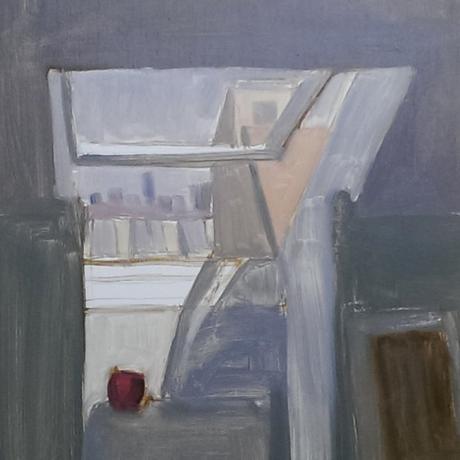
V Moods and emotions
Moods are not emotions, except perhaps for Heidegger (1962 [1927]: 136), who uses the terms more freely and interchangeably. There are very precise ways of teasing the two apart (see for example Gallegos, 2017: 1500), but a simple distinction on the grounds of intentionality will do here (Schmetkamp, 2017: 1684-5). Emotions are usually considered to be directed at some particular object: I am sad about the cancelled Kahlenberg outing. But von Kaufmann’s paintings, though they might leak a sort of sadness, cannot really be said to express sadness about any particular thing. Rather, they build up a diffuse kind of tone or atmosphere, which might be better described as a feeling directed toward the whole world or even toward existence itself: a mood. Heidegger (1962: 179; 228-235; 1978: 99) goes so far as to say that such undirected moods are the precondition for finding ourselves in a world at all, that our every encounter with the world happens through some pervading sense of menace or serenity or boredom or some other mood. Ratcliffe (2005: 49; 52) describes a similar affective background of bodily ‘existential feelings,’ which are similarly non-intentional but set the scene for the way we open up onto the world. Although there are fearful objects in von Kaufmann’s paintings, such as fish-headed men, we are not really invited to fear them or direct some emotion at them. Still, they draw some affective response from us, especially situated as they are in a murky and oppressive old room with their damp skin, casually violating one another. Thus, it would be more philosophically precise to say that von Kaufmann’s paintings are mooded.
Schmetkamp (2017: 1682-3) suggests that this more careful affective distinction dramatically changes the aesthetic terrain. While emotions and art have an enduring philosophical relationship (reaching right back to Plato’s (Rep. 595a-b) admonitions against the arts for their propensity to move and thus destabilise us), moods open up fundamentally different questions about how we relate to art, while holding fast to their affective core. Having elaborated what we mean by perspective, particularly in terms of painting, we are in a better position to look at Schmetkamp’s (2017: 1683) main claim that ‘moods are the expressive equivalent of perspectives.’ Moods, by her account, add an affective layer to perspective, a layer quite distinct from directed emotions. This has a very Heideggerian flavour, especially insofar as she invokes their pre-reflective, ‘world-disclosing capacity’ (Schmetkamp, 2017: 1684-5). The moods of others, expressed in artworks, she asserts, ‘assail human beings holistically,’ enabling them to ‘comprehend a perspective in an encompassing manner’ (Schmetkamp, 2017: 1683). Moods are not perspectives, she clarifies; rather they give us access to perspectives: they are the precondition for having a perspective at all, and the gateway to trespassing into another’s perspective (Schmetkamp, 2017: 1690).

VI The problem with perspective-shifting
Moods really come into play in art, according to Schmetkamp (2017: 1692), in two respects. The first, interestingly, is that they ought to help us to understand a work of art. Concentrating on film, Schmetkamp (2017: 1692) argues that since a film thematises a mood, correctly apprehending that mood is central to understanding the film. This strikes me as immediately problematic, for the same reason Slaby (2014: 256) is uneasy about trying to understand other people empathetically. Schmetkamp has snuck in the idea that moods are objects, pre-packaged and ready to be delivered up to our cognitive faculties.
Secondly, Schmetkamp (2017: 1685; 1692) argues that moods are important in art because they acquaint us with the perspective of another. Specifically, they enclose us in that perspective, inviting a confrontation between that perspective and our own. A film allows us to temporarily shift our perspective–‘without being totally absorbed’–and to potentially change our own perspective accordingly (Schmetkamp, 2017: 1691; 1693-4). It would not be much of a stretch to say this sounds like another form of empathy in which we try to inhabit the mood rather than the emotions of another person.
A non-trivial problem with this proposed shift in perspectives is that, as Goldie (2011: 302) makes clear, there are two ways we might try to do it. We might imagine ourselves in the other’s position–Goldie (2011: 302) calls this ‘in-his-shoes perspective-shifting,’ in which we draw a firm boundary between the self and the other (Coplan, 2011: 5)–or we might imagine ourselves as the other. The former would seem to miss the point of empathy, of Einfühlung or ‘feeling-into’ another, ignoring the situation as it applies to them (Slaby, 2014: 250). If you hate cycling up cobbled hills in the height of summer, imagining yourself in my position will not result in the same jubilant glee at the prospect of doing so. But imagining that you are me and all my confounding perplexities is no mean feat, and not only because you lack my background experiences, quirks of character, inexplicable love for the hills and other irrationalities (Goldie, 2011: 309; Slaby, 2014: 252-3). And not only because you would have to artificially objectify these background influences and bring them into the foreground to perform such a feat of empathy (Slaby, 2014: 252). Worse: you would deny my moment-by-moment authorship of my perspective–you would usurp my agency (Goldie, 2011: 315; Slaby, 2014: 252). My perspective is not a thing to be entered into, because as soon as you trespass upon it, you begin to author it.

VII Co-authorship
When we confront a painting by von Kaufmann, then, taking it to be an extension of his perspective, there is always an element of authorship from our side. Granted, it is not the same kind of authorship as he performs when he physically wrestles with the surface of the picture. Von Kaufmann posits himself in the world as he lays down paint, and the moods that swell up in his paintings originate in his own mooded opening onto the world itself. He repeatedly encounters the world as ominous, treacherous, doubt-riddled, dizzying, but also irresistibly beautiful in its relentless and indifferent onward surge. The curve of a shark’s nose slices onwards with the same elegant and ruthless force of life itself. As a well-dressed headless man leaps from a building, von Kaufmann’s undirected mood materialises in a precarious viewpoint, in the contrast between the clean angle of the building and the trembling texture of the fragile figure, in the unresolved edges and muted purples.
But von Kaufmann is not claiming authorship from our side, nor trying to persuade us to adopt his doubt, nor to revise our own perspective in the wake of a perspectival showdown. Rather sagaciously, von Kaufmann (via personal communication, December 2017) explicitly explains that he wants to give us just enough narrative substance that we feel we have a stake in each painting, that we are compelled to pick up and continue the story, for those stories are another way of making sense of the world (a sentiment echoed by Krueger (2011: 645), and a topic for another time). The magic happens when we find that something in this plainly laid out perspective already aligns with something of our own. It resonates with us precisely because of its familiarity, as though it were an expression of our own doubts. That is to say: we are not confronting some alternative view, but meeting with von Kaufmann on some common ground.

The painting reflects a shared space: the plane of the picture opens into an active field. As viewers, we are invited to author something else. We are prompted, at a common affective juncture, to continue to build our own perspective around this powerful embodied expression bestowed upon us Iike a gift. Our own background and idiosyncrasies and variable moods latch onto the ponderous mood, the anxiety, the bewilderment, but the stories that we weave are our own.
The shared space of a painting evidently lacks the reciprocation of a face-to-face encounter, and only loosely takes inspiration from Krueger’s (2011: 643-4) ‘we-space.’ The interaction cannot possibly happen in the same dynamic way that he argues for, for indeed there is no interaction between agents (Krueger, 2011: 646). Instead, each agent interacts with the painting. But what is crucial is that both painter and viewer remain agents; each understands that the other affectively engages with the painting and finds compelling common ground in that thin layer of paint because of the background-driven, future-oriented authorship of each party, however differently their actions might manifest.

VIII
A painting invites not a shift in perspective, but active authorship in an affective space that is live for both painter and viewer. The perspectives of the two necessarily differ, but sometimes there is enough overlap to forge a strong connection between the two, allowing each agent to author a different perspective from this common ground. Rather than trying to inhabit the painter’s perspective or to cognitively understand a painting as if its affective power lay merely in the uncovering of discrete packets of affective information, stressing the future-oriented agency of active parties physically immersed in an ever-unfolding world gives us a richer way forward in binding moods and art.
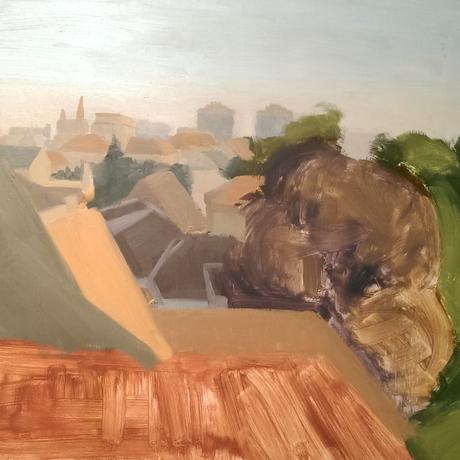
St Augustine. (2009). The Confessions. Oxford: Oxford University.
Coplan, A. (2011). Empathy: Features and effects. In A. Coplan, & P. Goldie, (Eds.), Empathy: Philosophical and Psychological Perspectives. Oxford: Oxford University.
Gallegos, F. (2017). Moods Are Not Coloured Lenses: Perceptualism and the Phenomenology of Moods. Philosophia, 45, 1497-1513.
Goldie, P. (2011). Anti-Empathy. In A. Coplan, & P. Goldie, (Eds.), Empathy: Philosophical and Psychological Perspectives. Oxford: Oxford University.
Goldman, A. I. (2006). Simulating minds : the philosophy, psychology, and neuroscience of mindreading. Oxford: Oxford University.
Goldman, A. I. (2011) Two Routes to Empathy. In A. Coplan, & P. Goldie, (Eds.), Empathy: Philosophical and Psychological Perspectives. Oxford: Oxford University.
Heidegger, M. (1962 [1927]). Being and Time. J. Macquarrie and E. Robinson, (Trans.). Oxford: Blackwell.
Heidegger, M. (1978 [1929]). ‘What is Metaphysics?’ in his Basic Writings. D. F. Krell (Ed. and trans.). London: Routledge.
Heidegger, M. (1993 [1927]). Sein und Zeit. 19. Edition. Tübingen: Max Niemeyer.
Husserl, E. (1973 [1948]). Experience and Judgment: Investigations in a Genealogy of Logic. London: Routledge & Kegan Paul.
De Jaegher, H., & E. Di Paolo. (2007). Participatory Sense-Making: An enactive approach to social cognition. Phenomenology and the Cognitive Sciences, 6, 485-507.
Von Kaufmann, R. (2014). Slideshow Lecture. Presented at the Laguna College of Art and Design. Laguna Beach, California. [Online] Available from: https://www.youtube.com/watch?v=odb_j855EUY [Accessed 12 January 2015].
Krueger, J. (2011). Extended Cognition and the Space of Social Interaction. Consciousness and Cognition, 20, 643-657.
Merleau-Ponty, M. (2012 [1945]). Phenomenology of Perception. Hoboken: Routledge.
Plato. (1988). The Republic, 2nd edition. Desmond Lee (Trans.). London: Penguin.
Ratcliffe, M. (2005). The Feeling of Being. Journal of Consciousness Studies, 12(8-10), 43-60.
Sartre, J. P. (1998 [1943]). Being and Nothingness: An Essay on Phenomenological Ontology. Hazel E. Barnes (Trans.). London: Routledge.
Slaby, J. (2014). Empathy’s Blind Spot. Medicine, Health Care and Philosophy, 17, 249-258.
Tolstoy, L. (1996 [1896]). What is Art? Richard Pevear & Larissa Volokhonsky (Trans.). Harmondsworth: Penguin.
Da Vinci, L. (2008). Notebooks. Selected by Irma A. Richter. Thereza Wells (Ed.). Oxford: Oxford University.
Wollheim, R. (1980). Art and Its Objects: With Six Supplementary Essays. Reprinted 2. ed. Cambridge: Cambridge University.
Zahavi, D. (2001). Beyond Empathy: Phenomenological Approaches to Intersubjectivity. Journal of Consciousness Studies 8(5-7), 151-67.
